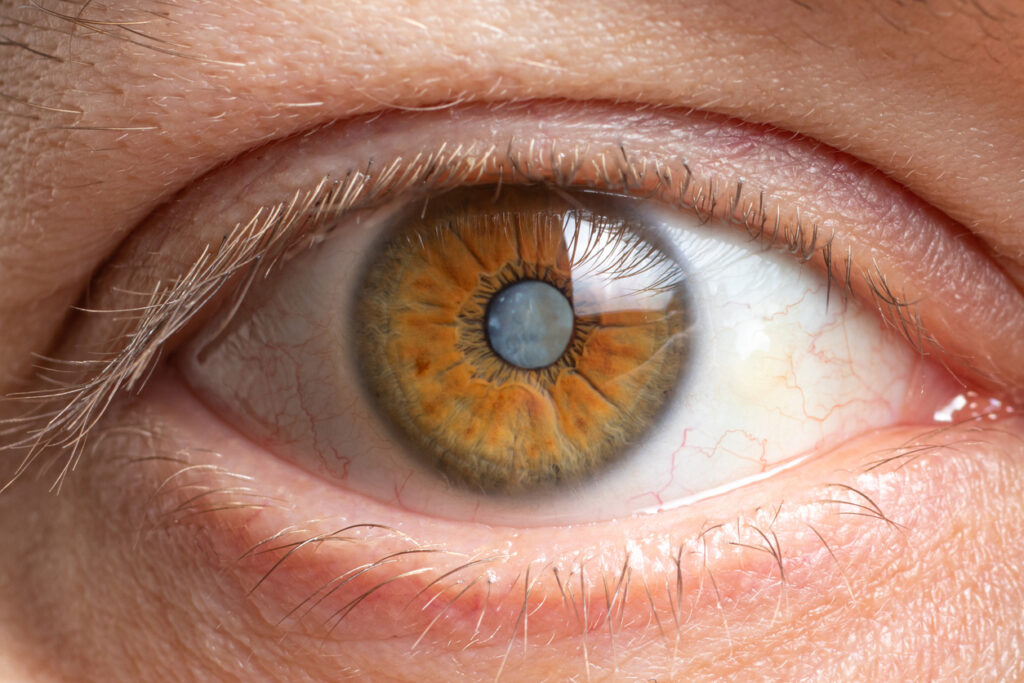Cataracts are a common condition that affects millions of individuals worldwide, particularly as they age. This gradual clouding of the eye’s natural lens can lead to significant vision impairment if left untreated. Timely cataract removal not only restores vision but also plays a crucial role in preserving long-term eye health. Understanding the importance of early intervention can empower individuals to make informed decisions about their eye care.
Understanding Cataracts
Cataracts develop when proteins in the lens of the eye clump together, forming cloudy areas that obstruct light from passing through. This condition can result from various factors, including age, genetics, prolonged exposure to UV rays, and certain medical conditions such as diabetes. Symptoms often manifest slowly, making it easy for individuals to dismiss them as a normal part of ageing. As the condition progresses, the clouding can become more pronounced, leading to significant visual impairment that can affect one’s ability to perform everyday tasks, such as reading, driving, or even recognising faces.
Timely cataract removal is a vital step in preserving long-term eye health and enhancing quality of life. By understanding the nature of cataracts, recognising the importance of early intervention, and being informed about the surgical procedure, individuals can take proactive steps towards maintaining their vision. The benefits of addressing cataracts promptly are clear, ranging from improved vision to enhanced overall well-being. Prioritising eye health is essential, and timely cataract removal can play a pivotal role in achieving this goal.
Additionally, lifestyle choices can also play a role in the development of cataracts. For instance, smoking and excessive alcohol consumption have been linked to an increased risk of cataracts, as these habits can contribute to oxidative stress in the eyes. Furthermore, a diet lacking in antioxidants, which are found in fruits and vegetables, may exacerbate the condition. Therefore, maintaining a balanced diet rich in nutrients can be a proactive approach to eye health, potentially delaying the onset or progression of cataracts.

Symptoms of Cataracts
Common symptoms of cataracts include blurred vision, difficulty seeing at night, sensitivity to light, and the perception of halos around lights. Many individuals may also find that their prescription glasses no longer provide the clarity they once did. These changes can significantly impact daily activities, leading to frustration and decreased quality of life. In some cases, individuals may experience double vision or a noticeable fading of colours, which can be particularly disheartening for those who enjoy vibrant visual experiences. Recognising these symptoms early can be crucial, as timely intervention may help preserve vision and improve overall well-being.
Moreover, the emotional toll of living with cataracts should not be underestimated. The gradual decline in vision can lead to feelings of isolation and anxiety, particularly in older adults who may already be facing other health challenges. Support from family and friends, as well as access to resources such as vision rehabilitation services, can be invaluable in helping individuals cope with the changes in their eyesight and maintain their independence.
Read more at: From Consultation to Recovery The Modern Cataract Operation
Types of Cataracts
There are several types of cataracts, with age-related cataracts being the most prevalent. Other types include congenital cataracts, which are present at birth, and secondary cataracts, which can develop as a result of other medical conditions or as a side effect of certain medications. Understanding the type of cataract can help tailor treatment options effectively. For instance, congenital cataracts may require surgical intervention at a young age to prevent developmental delays in vision, while secondary cataracts may necessitate a different approach depending on the underlying condition. Learn more about intervention at https://www.ncbi.nlm.nih.gov/books/NBK305514/
In addition to these types, there are also traumatic cataracts, which can occur following an injury to the eye. Such cataracts can develop immediately after the trauma or may take years to manifest. This highlights the importance of protecting the eyes from potential hazards, particularly in environments where injuries are more likely to occur. Awareness of the various types of cataracts and their causes can empower individuals to take proactive steps in safeguarding their eye health and seeking timely medical advice when necessary.
The Importance of Timely Intervention
When cataracts begin to interfere with daily life, timely intervention becomes essential. While some individuals may opt to wait until their vision deteriorates significantly, this approach can lead to complications that extend beyond mere vision loss. Early removal of cataracts can prevent further deterioration of eye health and enhance overall well-being.

Preventing Complications
Delayed cataract surgery can lead to a range of complications, including increased risk of falls and accidents due to impaired vision. Moreover, prolonged exposure to reduced vision can lead to conditions such as depression and anxiety, as individuals struggle to adapt to their changing sight. By addressing cataracts promptly, individuals can mitigate these risks and maintain a higher quality of life.
In addition to the physical risks associated with delayed surgery, there are also social implications. Individuals with untreated cataracts may find themselves withdrawing from social interactions, as the frustration of not being able to see clearly can lead to feelings of isolation. This withdrawal can create a vicious cycle, where the lack of social engagement exacerbates feelings of loneliness and depression. Timely intervention not only helps in preserving vision but also encourages individuals to remain active participants in their communities, fostering connections that are vital for emotional health.
Improving Quality of Life
Restoring clear vision through timely cataract removal can have a profound impact on an individual’s quality of life. Many patients report improvements in their ability to read, drive, and engage in social activities post-surgery. This newfound clarity not only enhances day-to-day functioning but also contributes to overall mental and emotional well-being.
Furthermore, the benefits of timely cataract intervention extend beyond the individual. Families often experience relief when their loved ones regain their independence and confidence. The ability to participate in family gatherings, hobbies, and even simple tasks like shopping can significantly enhance the dynamics within a household. As patients reclaim their visual capabilities, they often find joy in activities that had previously become challenging, leading to a more fulfilling and enriched life experience for both themselves and their families. To learn more about dynamics click here.
The Surgical Procedure
Cataract surgery is a common and generally safe procedure performed by ophthalmologists. The surgery typically involves the removal of the cloudy lens and its replacement with an artificial intraocular lens (IOL). Understanding the procedure can alleviate any concerns individuals may have and encourage them to seek timely treatment.
What to Expect During Surgery
The surgery is usually performed on an outpatient basis, meaning patients can return home the same day. Local anaesthesia is administered to ensure comfort during the procedure. The surgeon makes a small incision in the eye, removes the cloudy lens, and carefully implants the IOL. Most surgeries last less than an hour, and patients often experience immediate improvements in vision. It is worth noting that advances in technology have made cataract surgery even more efficient. For instance, some surgeons may use a technique called phacoemulsification, where ultrasound waves break up the cloudy lens into tiny fragments, which are then gently suctioned out. This method not only minimises the incision size but also promotes quicker recovery times.
Post-Surgery Care
Following cataract surgery, patients are typically advised to rest and avoid strenuous activities for a short period. Eye drops may be prescribed to prevent infection and reduce inflammation. Regular follow-up appointments are crucial to monitor healing and ensure optimal results. Most individuals can resume normal activities within a few days, enjoying clearer vision and improved quality of life. During the recovery phase, it is essential for patients to protect their eyes from bright lights and avoid rubbing them, as this can interfere with the healing process. Additionally, patients may be encouraged to wear sunglasses when outdoors to shield their eyes from UV rays, which can be particularly sensitive post-surgery. Engaging in light activities such as reading or watching television can be beneficial, as these tasks do not strain the eyes and can help in the adjustment to the new lens.
Long-Term Benefits of Cataract Removal
The long-term benefits of timely cataract removal extend beyond improved vision. Studies have shown that patients who undergo cataract surgery experience a lower incidence of falls, reduced risk of depression, and an overall enhancement in their quality of life. These benefits underscore the importance of addressing cataracts promptly.
Enhanced Eye Health
By removing cataracts, individuals not only restore their vision but also contribute to the long-term health of their eyes. Timely intervention can prevent the development of secondary complications, such as glaucoma or retinal detachment, which can arise from untreated cataracts. Regular eye examinations and early treatment are key to maintaining optimal eye health as one ages. Furthermore, the restoration of clear vision allows individuals to engage more fully in daily activities, from reading and driving to enjoying nature, which can significantly boost mental well-being and social interaction.
Cost-Effectiveness of Early Treatment
Investing in timely cataract removal can also be seen as a cost-effective measure. While the initial expense of surgery may seem significant, the long-term savings associated with improved health outcomes and decreased reliance on vision aids can outweigh these costs. Additionally, the potential for reduced healthcare expenses related to falls and other complications further supports the case for early intervention. Moreover, the economic benefits extend to society as a whole, as fewer hospital visits and lower healthcare costs can alleviate the burden on public health systems, ultimately benefiting taxpayers and the economy at large. This makes a compelling argument for prioritising eye health and ensuring that individuals have access to necessary surgical interventions when needed.
Conclusion
For those experiencing symptoms of cataracts, consulting with an eye care professional is crucial. Early diagnosis and treatment can lead to better outcomes and a brighter future. Don’t wait for your vision to deteriorate—take action today to ensure your long-term eye health.
